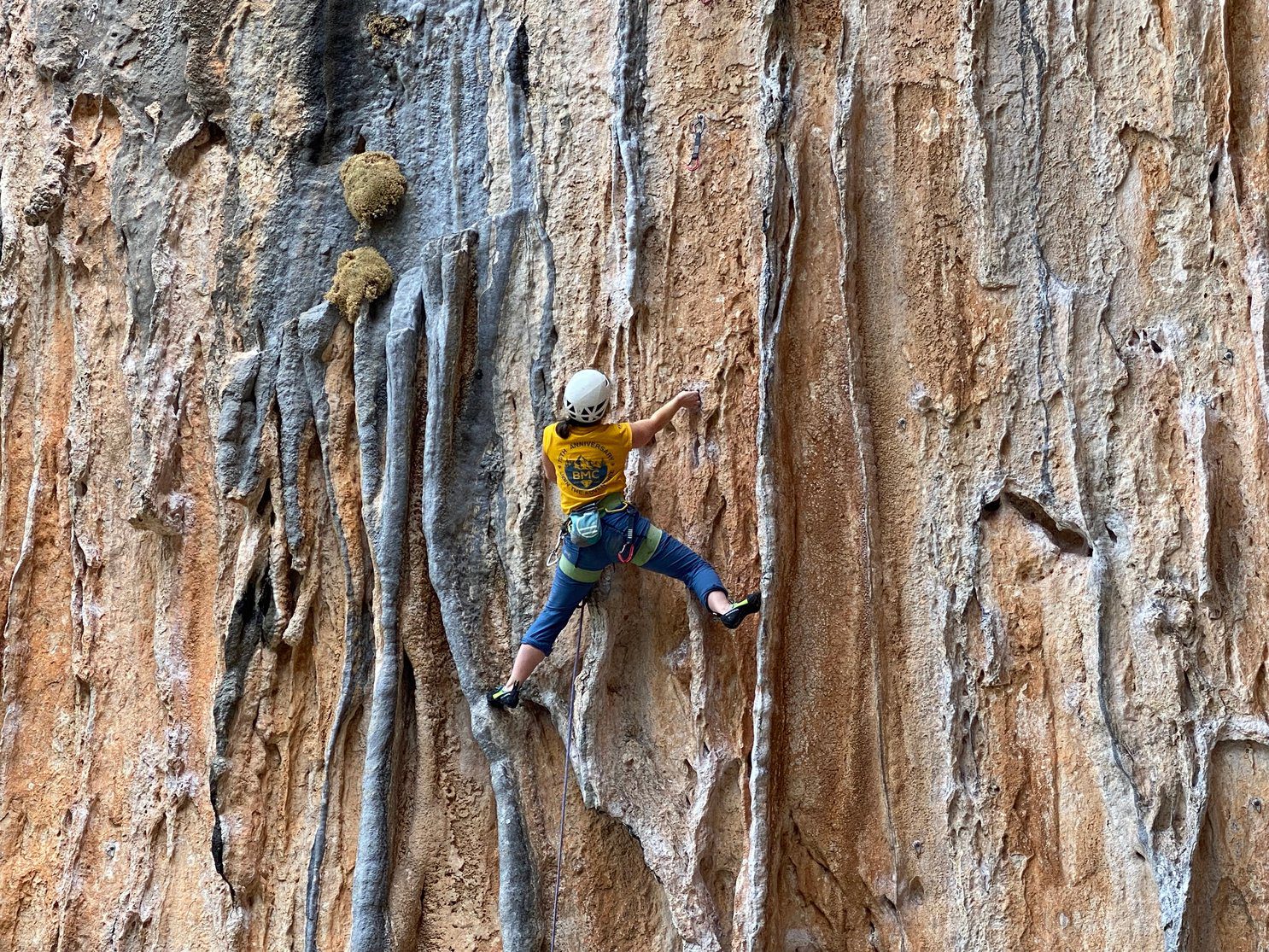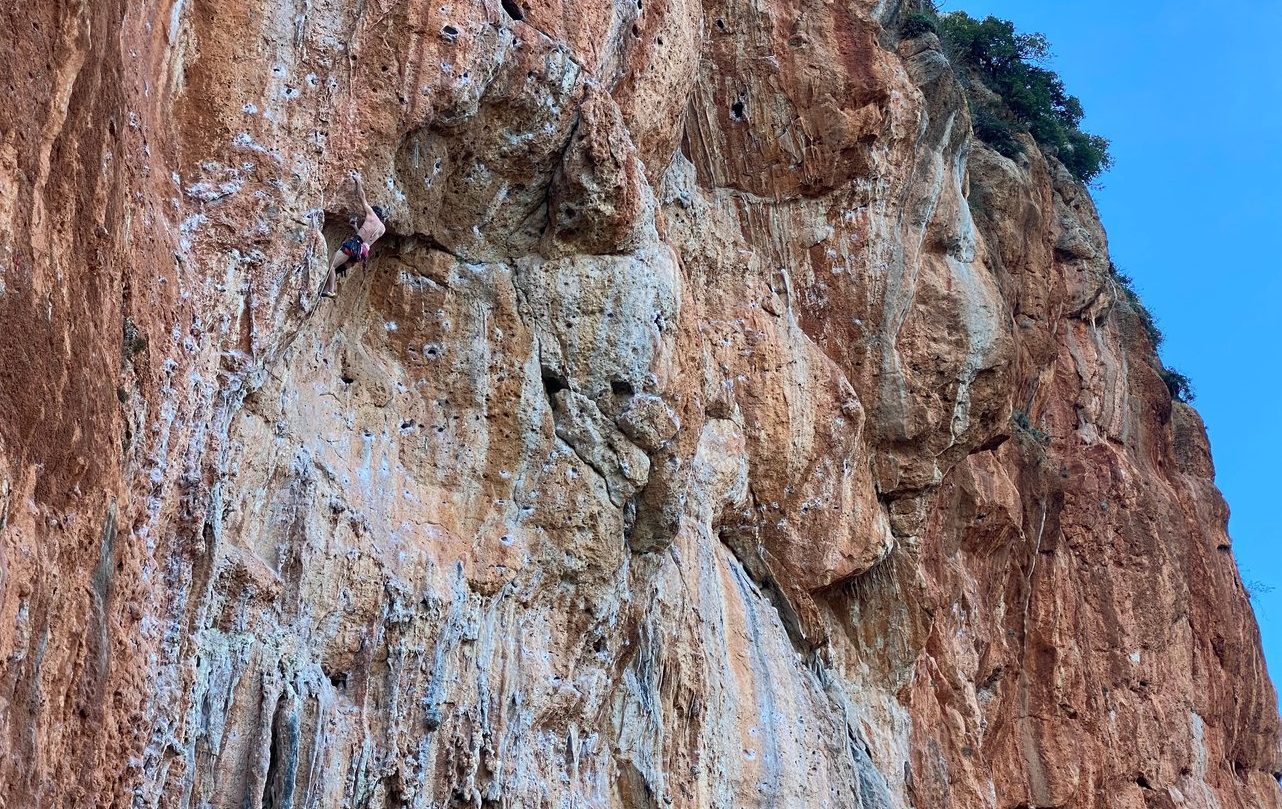Five Tips to Send Your Fall Project Faster
Follow these pieces of advice for more efficient sport and trad climb projecting

Projecting can be a stressful process, especially if you’re near the end of the season and you’re trying to send a route you’ve been failing over and over again. Your time and energy is limited, so you need to make the most of every single redpoint attempt if you want to send a route quickly. Some wise decision-making early on in the projecting process can really speed things along. Here are five tips for your fall season sport or trad route project that should reduce the total number of redpoint attempts you need to finally get that send.
1. Write Down Your Beta
After you finish your first session on your new project, write down all the beta that you can remember. You can use a pen and paper or an electronic device. A hand-drawn route map is also extremely useful. Draw the route with as much detail as possible. Add in your hand holds, foot holds, kneebars, rest positions, and bolts. After each session throughout the projecting process, come back to your written beta and route map and make adjustments as needed. It can also be helpful to go through your route map daily to keep the route fresh in your mind.
Videoing yourself climbing the route is another very helpful tool. You can watch yourself from an outside perspective and pick up on key pieces of beta that you may not have noticed while on the climb. Videoing yourself is not, however, a substitute for writing down your beta. Creating your route map and beta notes helps you memorize and rehearse the route in your mind, speeding along the learning process.
2. Don’t Waste Energy
You have a limited amount of energy each session at the crag. Use this energy wisely, especially when you feel you’re getting close to the redpoint. After your full warm-up, it’s a great idea to work up the route bolt-to-bolt to remember holds and sequences and get your body and mind fine-tuned for a proper redpoint attempt. Prevent yourself from working too hard during this suss-out session. You do not want to get flash pumped or needlessly use up your power doing a crux over and over again.
3. Brush the Holds and Explore
When hanging out in your harness to recover in between sequences, use this downtime to your advantage. Explore the terrain around you. Brush each hand and foot hold and look for subtle nuances in the holds. Does this tiny crimp feel better with three fingers or four? Which two fingers should go in this pocket? Really get to know the holds. Memorize them. Brush the holds not only to improve their quality but also as a means to discovering new hand and foot placements.
4. Take the Fall
If a potential fall from a specific section of the route feels scary and is causing tension and over-gripping, you need to address this. If you know that the fall is safe, take the fall. First, take a smaller version of the fall. Then build up to bigger and bigger ones. Overcoming fear is particularly important for the top of a route where you’re likely to be more fatigued. Unnecessary fear causes stiff movement, poor decision-making, and wastes energy, limiting your chance of success.
If the fall is actually potentially dangerous, consider what you can do to mitigate danger. For example, talk with your belayer about giving more or less slack. Extend a quickdraw. Milk a rest extra long before moving into the spicy section. Tire out one arm to save juice in the other arm for the gear placement or clip.
5. Consider Working the Project Top-Down
The obvious way to work a route is from the bottom-up. You dial in the first section, then link the first section with the second, then the first and second with the third, etc. However, on sustained, pumpy routes, you’re more likely to fall at the top than the bottom during a redpoint attempt. It’s therefore super important that you have the top section absolutely dialed.
An interesting way of projecting a route is to work it top-down. What exactly does this mean? Let’s say a particular route can be broken down into three sections. In this top-down method, you’d work the final section until it feels good. Then you could try to link the middle section and top section. Then, once those feel manageable, you’d try to link all three sections and eventually start giving proper redpoint attempts.
This method does take a bit of extra work as you first need to get near the top of the route to start working sections. This isn’t really a problem though as you can take it easy going up the route initially in a bolt-to-bolt fashion, brushing holds and assessing beta along the way. Lots of climbing pros are a big fan of the top-down method as it can counterintuitively save time throughout the whole process. Stefano Ghisolfi, for example, employed a top-down projecting approach for his eventual redpoint of Excalibur 5.15c.




